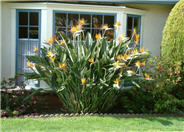
Common name:Bird Of Paradise
Botanical name:Strelitzia reginae
This shrub will grow to 6' tall and has large, gray green fronds with orange, blue, white, or multi-colored flowers that bloom throughout the year.
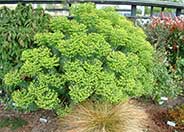
Common name:Wulfen Euphorbia
Botanical name:Euphorbia characias wulfenii
This perennial will reach about 4' tall and has significant green leaves with clusters of yellow flowers.
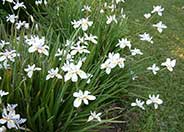
Common name:Butterfly-Iris, Fortnight Lily
Botanical name:Dietes iridioides
This clumping evergreen Iris bears tall, narrow leaves to 30" tall and white flowers marked purple in the center on stalks up to 3' tall. This variety has stiffer, darker foliage than the bicolor form. It requires sun to part shade with little or no summer watering when established. -Monterey Bay Nursery
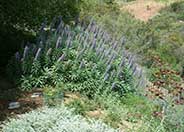
Common name:Pride Of Madeira
Botanical name:Echium candicans
Mature specimens of this evergreen shrub can grow to a size of 6'-8' tall and 8'-10' wide. In the spring, spikes of rosy-violet to blue-purple flowers appear. It should receive sun to part shade, with little or no summer watering when established. This plant can be severely damaged by frost below 25 degrees F.
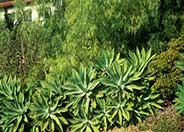
Common name:Fox Tail Agave, Velvet Agave
Botanical name:Agave attenuata
This Agave has a dramatic tropical form. Even light frost can damage its succulent leaves. It is great for containers. In the low desert, partial sun will be best. If it becomes top heavy, simply cut and stick in the ground to root. It is not a fast grower and has light green foliage. It will also die after flowering but pups around the mother will survive. Distinctive with its large rosette of leaves perched on a long curving trunk, it is a native from Mexico.
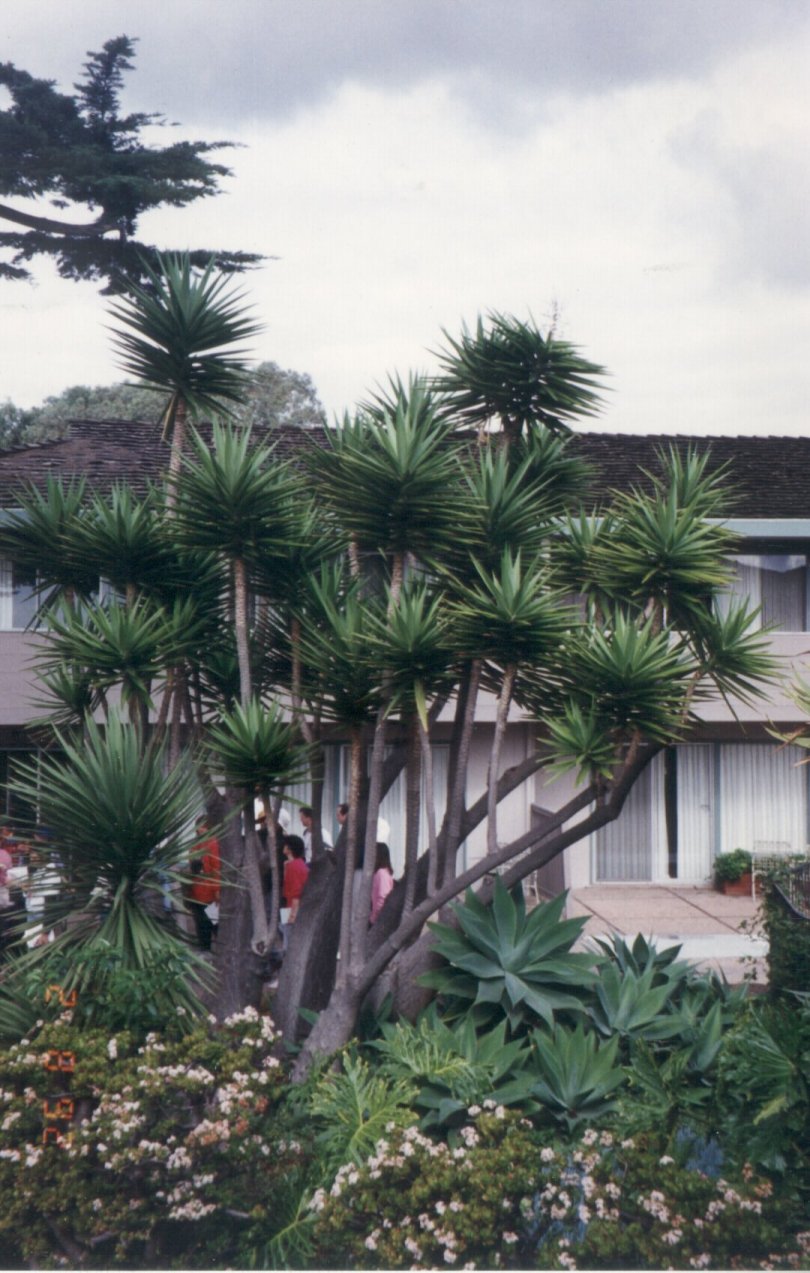
Common name:Gloriosa Yucca, Spanish Dagger
Botanical name:Yucca gloriosa
This clumping palm relative will reach 10' to15' tall and has large, green, sword-like leaves with white flowers in spring and summer. Its broad, medium green leaves blend with either tropical or desert theme landscapes.
Photographer: GardenSoft
Practice grass-cycling by leaving short grass clippings on lawns after mowing, so that nutrients and organic matter are returned to the soil.
Drip and other smart irrigation delivers water directly to roots, allowing no excess water for weeds.